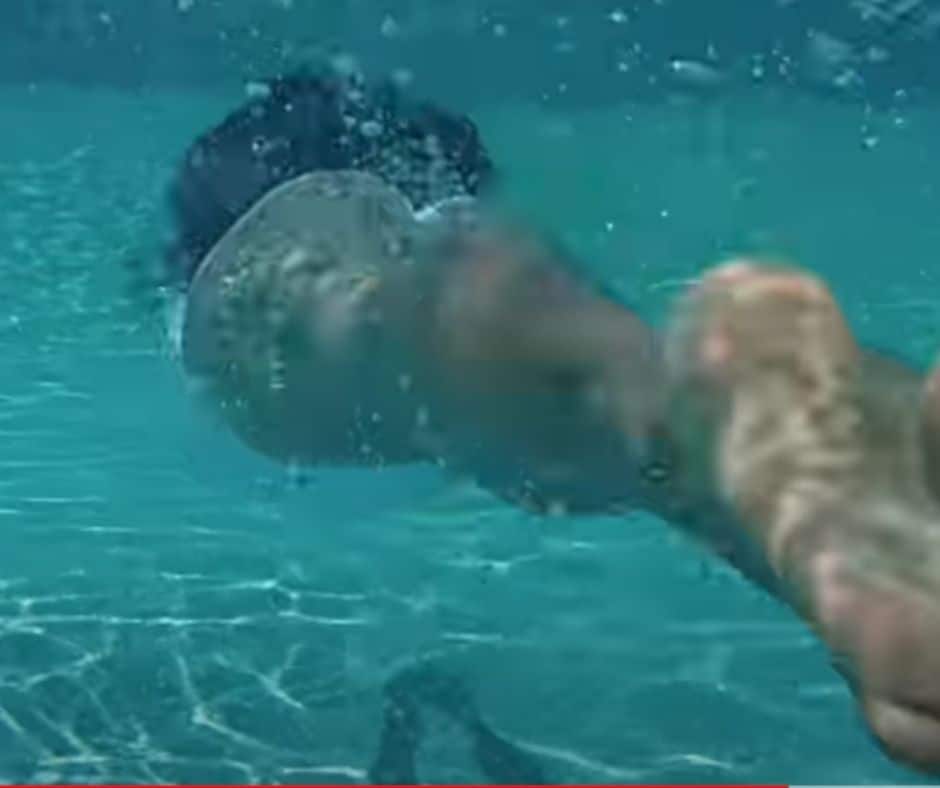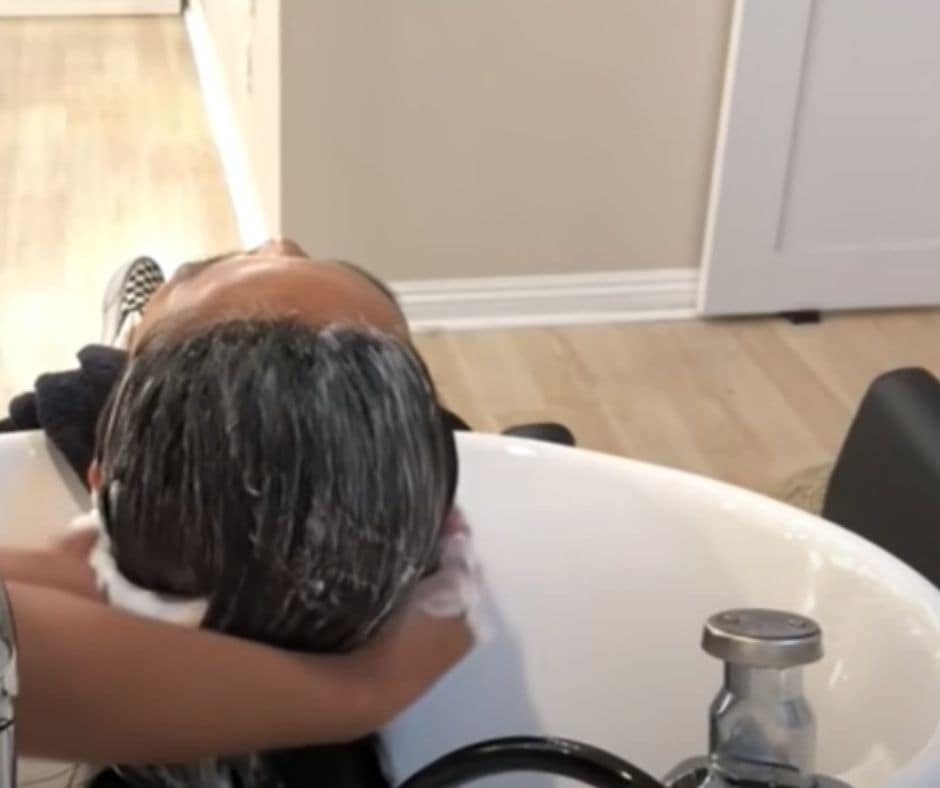Protect color-treated hair when swimming

The summer sun may be harsh on color-treated tresses. Hot days need a dip in the pool, but the corrosive chlorine can be harmful to your hair’s health and color. Color touch-ups at the salon every month can be costly, and you don’t want to injure your hair after you’ve discovered the perfect shade. But don’t skip out on pool days because you’re worried about ruining your hair treatment. With these recommendations for preserving your hair before, during, and after a swim, grab your favorite sunscreen and head to the pool deck.
You might wish to spend some time in the pool with your friends and family. This means you’ve probably already spent a lot of time at the beach soaking up the sun and hanging out poolside with your buddies. As a result, there’s only one thing that can happen to your hair: damage, and a lot of it. While the sun, heat, and humidity may all be damaging to our hair, nothing affects color-treated hair like chlorine and saltwater. Because chlorine and saltwater, like the sun’s UV rays, drain the hair of its natural moisture, leaving it dry, brittle, and frizzy, they should be avoided.
Jumping into the water and completing a few laps strengthens your cardiovascular system, is gentle on your joints, and provides a much-needed break from reality. You’ll be in terrific shape by the time you glide out of the water.
You also have that distinct odor as you leave the pool. Chlorine, as you may be aware.
Green hair color and dried-out hair are two of the most well-known hair-related issues that swimmers confront. It’s also important to know how to protect color-treated hair when swimming if you’re a regular swimmer with dyed hair. The sun, water, chlorine (a bleaching agent), copper, and other substances can fade and damage color, which no one wants, especially if they’ve paid for a professional color treatment. So let us take a closer look and answer some questions, shall we?
How do I protect my dyed hair while swimming?

Here are some easy ways to keep color-treated hair safe while swimming. Use them to get the most out of your color treatments, both in terms of time and money, and to prevent trips to the salon for touch-ups, when the expense mounts up.
● Invest in high-quality dyes and expert hair treatments, which will last longer and withstand the harsh elements you’ll be exposed to in the water, which can cause them to fade faster.
● Swimming should be done three to seven days after coloring.
● Drench your hair before going swimming; it won’t collect nearly as much chlorine, other pool chemicals, metals, or other potentially color-distorting substances if it’s already damp.
● If you don’t mind getting your hair a little messy, apply a little layer of coconut oil, argan oil, or olive oil to your hair before diving in.; this creates a barrier between your colored locks and the damaging components in the water.
● To reduce your hair’s exposure to the water and its potentially harmful substances, wear a swim hat in the pool or while swimming in open water
● After swimming, quickly rinse your color-treated hair.
● Usage a two-in-one shampoo and conditioner that is gentle enough for everyday use and color-treated hair right after swimming to neutralize chlorine, bromine, and other pool chemicals.
● Once a week, use a deep conditioner designed for color-treated hair.
● When you soak, rinse, or wash your hair, avoid using hot water since it fades hair color.
● If you use a hot tub, keep your hair out of the water.
● When lying poolside or on the beach, keep your color-treated hair out of direct sunlight as much as possible.
● If you’re treating your own pool, look for a copper-free algaecide; copper is what causes blond swimmers’ hair to turn green.
Can you swim with color-treated hair?

Yes, you can, but before you think of dipping your colored hair into the pool, you should try doing these before swimming or diving into the pool.
Oil your hair
Chlorine and saltwater have the ability to dry your hair, which is one of the most dangerous negative effects, resulting in split ends and damage. Furthermore, chlorine and saltwater serve to deplete the gloss and brightness of the hair, making it appear dull and lifeless. That’s why it’s critical to preserve your hair even before you get into the water. Preparing your hair with rich oil, such as argan or coconut, is a simple approach to do so. The oil will help to form a slick barrier between your strands and the damaging water while also adding hydration and nourishment.
Do not forget to pre-soak
You’ve probably seen those outdoor showers at your neighborhood pool or beach. Make use of them! Before leaping into the pool, wet your hair with fresh, clean water to reduce the likelihood of your hair absorbing any of the water, which can help prevent dryness and damage. Would you not want to run all the way up to the shower at a friend’s house? No problem—a bottle of filtered water will suffice.
Use SPF on your hair.
Your hair, just like the skin, requires protection from the sun. Hair-specific sunscreens are the answer. Unlike traditional SPF, which is likely too heavy and greasy for your hair, these lightweight treatments are not only safe and convenient to apply to your hair but also excellent in blocking out the destructive effects of the sun and chemically treated water.
The idea is to search for UVA and UVB filters in products like our color protection and anti-aging hair aims. They can help protect your color by fending off harsh rays and chemical damage when added to your personalized shampoo, conditioner, or leave-in treatment formula. If you want to protect your scalp, Coola’s Organic Scalp & Hair Mist is also a good choice. Do keep in mind that the key to any SPF is to use it early and often!
Get Rid of It
When you’ve finished swimming for the day, make sure to thoroughly rinse your hair with clean water. It may seem redundant, but it’s critical to wash away any chemicals or dry sea salt since they can continue to strip your hair of color and moisture even after you’ve exited the pool. This is also a wonderful opportunity to give your hair a boost of moisture, nourishment, and color protection by applying a little of our personalized leave-in treatment.
Updo Your Hair
While a swim cap is the greatest way to protect your hair from the weather, we understand that it isn’t the most fashionable look. A braid, ponytail, or topknot may help keep your hair looking fresh and lovely no matter what the remainder of the day throws at you while also preventing your strands from soaking up all of that damaging water.
How to Shampoo and Condition Properly

Giving your hair lots of hydration, which starts in the shower, is the key to keeping your beautiful color. It’s important to use a color-safe shampoo and conditioner,
Shampoo and conditioner works (but aren’t recommended)
You can also use conditioner, as earlier mentioned, to lather your hair before getting into the water. We can admit that doing this is quite effective.
It is, however, incredibly inconsiderate of your fellow swimmers. The substance will leave a stench in the pool and will react with chlorine, resulting in a cloud of chloramines. (Chloramines are a chlorine byproduct that makes it difficult for individuals to breathe in swimming pools.)
Sadly, a lot of health and fashion websites promote this suggestion as a good idea. Save this method for the backyard pool or hot tub, not shared pool, as a courtesy to other swimmers and your breath.
If you don’t like the notion of utilizing food-based oils to preserve your hair while swimming, there are plenty of other options.
To offer an extra barrier between your hair strands and the chlorinated water, use a hydrating conditioner (such as one containing dimethicone) before swimming.
After you’ve finished and cleansed your hair with shampoo, apply a deep conditioning mask or leave-in conditioner to your hair to help rehydrate it and prevent future damage.
Keep in mind the deep condition.
Think your color-treated hair care routine ended when you got out of the shower. Your hair will get dehydrated and lifeless as a result of all that time spent floating around in the pool, which is why you’ll need more than just a decent conditioner to help keep it alive.
How long after coloring your hair can you swim?
When you use semi-permanent hair dye, you won’t have to wait nearly as long to join your buddies in the pool. Before you expose your hair to pool water and chlorine, it is recommended that you wait 72 hours or three full days. The waiting period is slightly shorter with semi-permanent hair dye because it does not include as many chemicals as permanent hair dye. Therefore, double-check with your stylist before jumping into the deep end of the cannon-ball style.
A permanent dye cannot be exposed to pool water for as least a week, whether you have highlights, balayage, or your entire head colored. This implies you’ll have to wait a week before swimming in the pool if you’ve colored your hair. Hair dye contains chemicals, such as hair developer, that give your hair a permanent color. It cannot be subjected to other chemicals, such as chlorine. This could result in an unfavorable chemical reaction, ruining your hue. It’s also a good idea to ask your stylist for their opinion on pool and chemical exposure.
Is chlorine bad for freshly dyed hair?
Has anyone ever seen a blonde, natural or dyed, come out of the water with green-tinted hair? Or someone with green streaks and softer highlights? That’s chlorine, and if the shade is light enough, the chlorine will do the same thing to natural or colored hair.
Because chlorine is a chemical and hair dye also contains chemicals, its contact can cause a reaction that progressively changes the hair color, usually to a greenish tinge depending on the hair shade. This rarely happens during a single swim, but if you are a regular swimmer or spend quality time in the pool, it may happen over time.
Chlorine dries out your hair, particularly color-treated hair. It can grow brittle and dry over time, resulting in split ends. Chlorine is bad for your hair in general. However, if chlorine is used carefully, it should not cause too much damage to your hair.
Does coconut oil protect hair from chlorine?
Coconut oil is excellent for locking in moisture and strengthening the hair shaft. Hair should be washed with non-chlorinated water.
Coconut oil, which is high in fatty acids that moisturize your hair and scalp, and it’s frequently much less expensive than olive oil for daily usage.
Is it okay to use coconut oil before swimming?
Before entering the pool, use a deep conditioner or natural oil like coconut oil to your hair, according to hair experts. If you’re going to apply oil, make sure you’re wearing a hat or swimming in an indoor pool; otherwise, the oil will attract sun damage if you’re outside.
Do swim caps protect hair from chlorine?
It protects you. If you’re swimming in open water with a lot of traffic, light-colored caps will assist other swimmers, or boaters notice you. When swimming in cold, huge amounts of water, some even keep your head warm!
What is the purpose of wearing a swim cap?
Allows you to concentrate on your workout by keeping your hair out of your face.
It eliminates drag in the water, allowing you to swim faster. Swim caps are preferable to just tying your hair in a ponytail because they secure all of the little hairs around your forehead and neck and prevent your ponytail from dragging in the water.
It shields your hair. Swim caps aren’t made to keep your hair dry only, but they do provide a layer of protection against chlorine damage.
Is it really important to wear a swim cap?
Nope! It is not essential for swimming; however, it is highly recommended if you have hair that is 6 inches or longer. Caps are colored suitable for both men and women.
There is a resistance/drag effect for high-performance swimmers, however wearing a cap prevents hairs from drifting into the pool water, obstructing the filtration systems, and gathering in asteroid-shaped balls at the bottom of the pool.
In terms of hair protection, it reduces the amount of chlorine-contaminated water that reaches your hair.
How do I protect my blonde hair when swimming?
Blonde hair is frequently more sensitive and porous [than darker hues], whether it’s natural or professionally tinted. Even if you’ve been active, don’t wash your hair every day. Because daily shampoo can remove too much of your natural oil, rinsing with warm water and lightly conditioning is adequate to remove sweat. However, to avoid the pool turning green, remember to rinse away the chlorine as soon as you’re done swimming for the day.
Before
Before jumping in the pool, rinse your hair with cold water. Wet hair is less prone than dry hair to absorb as much chlorine.
Prevent damage to your hair by using specific products on the front end. Use a chlorine-fighting product to protect your hair from the harsh chemicals in the pool.
While swimming, coconut oil will help to keep your hair healthy. Before you jump in, liberally apply it to your hair. This beneficial oil is a natural sun protector as well as a chlorine repellant.
During
Wear a swim cap in the pool to channel your inner Olympian. It will not only protect your hair but also keep it out of your face when swimming laps.
It’s the best way to keep your hair in a bun to avoid too much chlorine absorption.
After
Rinse your hair with cold water and brush it with a wide-toothed comb as soon as you get out of the pool.
To remove leftover chlorine from your hair, use a clarifying shampoo.
Hydrate, hydrate, and hydrate some more. Hair might be dry, brittle, and unimpressive after a swim. Deep-condition your hair to rehydrate it and return the nutrients it has lost. Conditioning hair masks are another excellent technique to add moisture and luster to your locks.
Conclusion
When it comes to swimming with colored hair, there are a lot of limitations, but it is still possible to have fun with colored hair in the pool. The pool should still be a wonderful location to show off your hair as long as you wait the necessary time before swimming, protect your hair as much as possible, and discuss the rules and hazards with your stylist. If you’re still worried about probable harm to your dyed hair, wait until winter to go to the salon!
